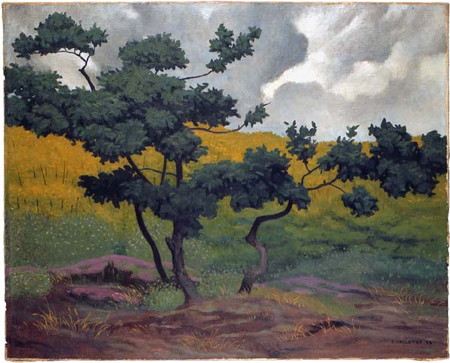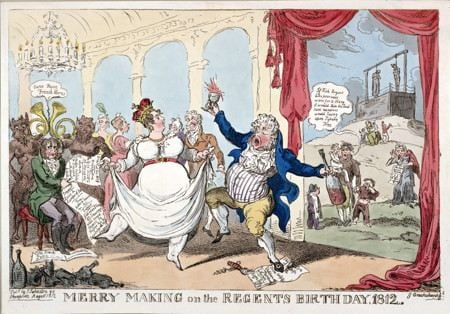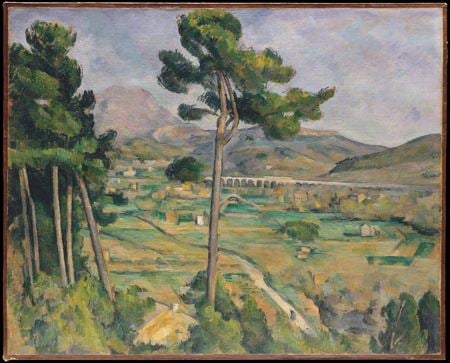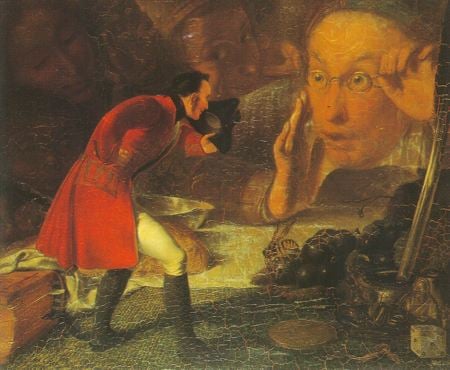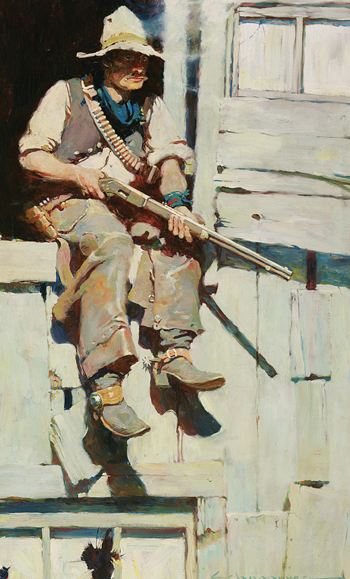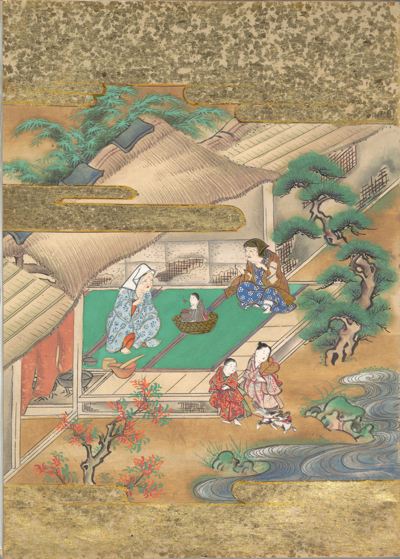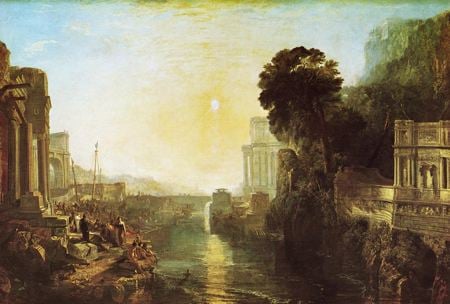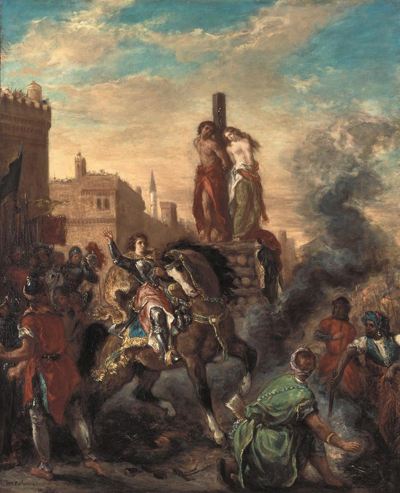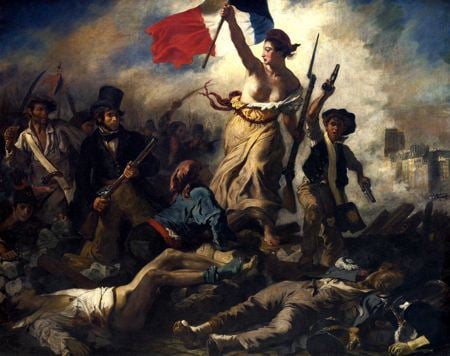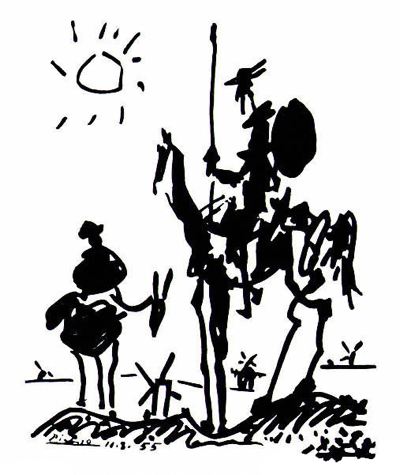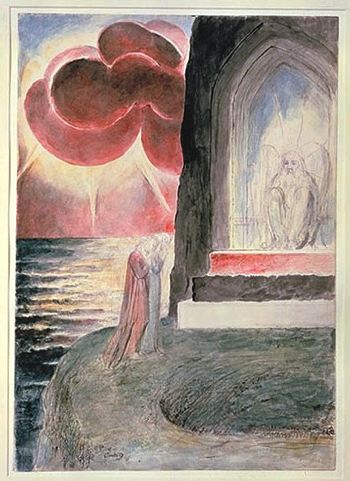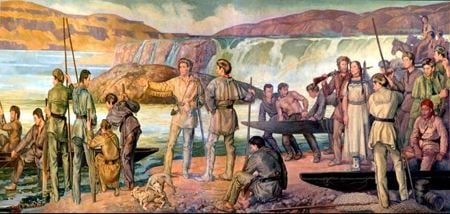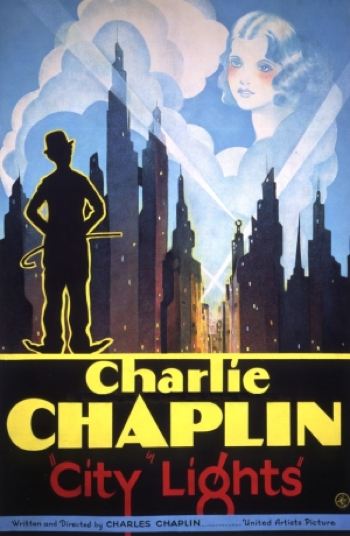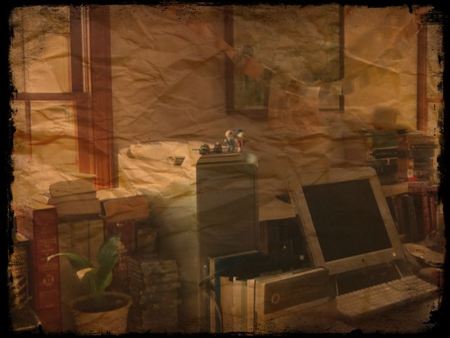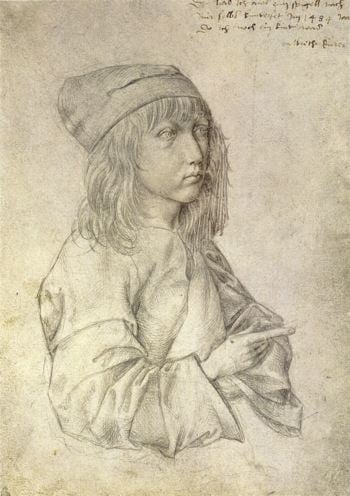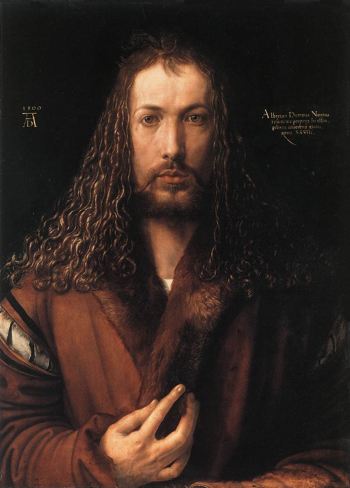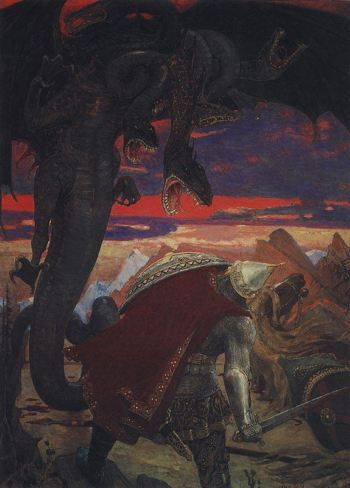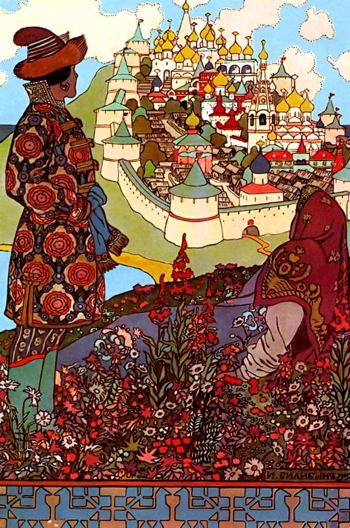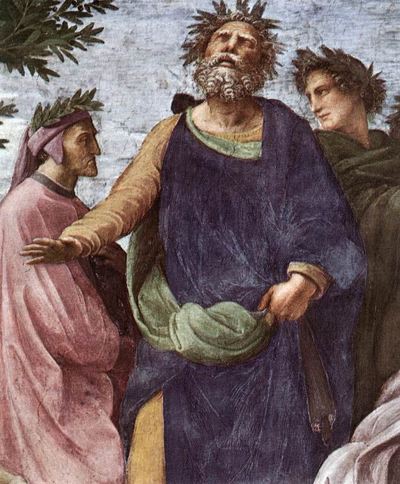Over the Rainbow
Keith Jarrett
It’s a Fact
The Course of Empire Consummation
Thomas Cole
http://en.wikipedia.org/wiki/File:The_Course_of_Empire_Consummation_Thomas_Cole_1835_1836.jpeg
There are those that seem to think the principal purpose of the written word is to convey information. Ours is a digital age and what a digitized world can accumulate quickly are facts and information, data of all kinds, colors, and shapes. Of course there are others who see other purposes for the written word. A recent article in The Los Angeles Review of Books, “Literature is not Data: Against Digital Humanities,” considers the wisdom of looking at literature and the humanities as data. What is lost when we value things solely on the basis of the information they provide? What is lost when we look at a book, a film, or a painting, or listen to music as though they were data banks to be mined? The article focuses on the Google project of digitizing (or attempting to digitize) all the world’s libraries, all the books currently in print and argues that what is most important in these books cannot be digitized. Of course the words can be captured and the books put into their digital bindings on a digital shelf, but the true content of these books lives in the human heart and the human imagination and cannot be so easily preserved by machines.
Neil MacGregor in his new book Shakespeare’s Restless World looks at objects that in one way or another capture what is important in Shakespeare’s plays and how he and his world; how we, and our world, how different times and places have responded to these plays. MacGregor and Eric Hobsbawm wrote articles recently, “Shakespeare, a poet who is still making our history” and “Shakespeare’s Restless World by Neil MacGregor – review,” that addressed issues the book raises. Both articles and the book make reference to the Robben Island Bible. Robben Island was the South African prison where the leaders of the African National Congress and the Anti Apartheid movement were confined. One prisoner, Sonny Venkatrathnam, when he was told he was only allowed one book smuggled in the Complete Works of Shakespeare disguised as a Hindu Bible. As Venkatrathnam’s release date approached he asked his fellow prisoners to sign his book and select meaningful passages, which they all did. The larger point is that literature sustains and nurtures the spirit. If all these prisoners, or any prisoner, especially those jailed for political reasons, had access to were facts, data, and information there would be little consolation to be found. To a prisoner of conscience the facts are often oppressive; they often erode hope and weaken the spirit. Books, paintings, music, and the arts in general remind us that there are forces more powerful than the forces of this world. And these books and paintings and all do not need to be with us in a concrete form. The songs and stories and images live inside those that know them and they can be drawn upon whenever the need arises. As the words of the song suggest, there is a place somewhere over the rainbow where the spirit and the imagination can run free and the power of empire cannot pursue.
The Sleeping Gypsy
Henri Rousseau
http://en.wikipedia.org/wiki/File:Henri_Rousseau_-_La_zingara_addormentata.jpg
The paintings above and below suggest the imagination’s work in the world. The sleeper appears to be in a dangerous situation, or perhaps not. The situation depends on the role of the lion. Is the lion keeping watch over the sleeper or is the lion a threat to the sleeper. The lion’s behavior in the painting suggests more one of watchfulness than attack. The objects in the painting are also suggestive. The clothing the woman wears is multi-colored and she has only a walking stick, a mandolin, and a jug, probably of water, but it could be something else. The colors and the musical instrument suggest the woman lives in the imagination. The walking stick and the jug suggests she lives in the real world at the same time, she has provided for both the soul and the body.
The painting below suggests there are those in heavenly places who dance in time to the music that orchestrates our steps. The musician playing for the earthy dancers has angel’s wings and suggests interaction between the heavens and the earth, that each is involved with the life of the other. There was an article recently, “Head and Heart,” about politics and morals. The article is actually a review of a couple books exploring the values of liberals and conservatives and suggests that Emerson’s observation, “Of the two great parties, which, at this hour, almost share the nation between them, I should say, that, one has the best cause, and the other contains the best men” still resonates. One of the books argues for the importance of religion in society, not because it is true, but because of its usefulness in maintaining a civil society. Are the angels, the heavenly dancers, the lion watching over us as we sleep, just stories and figments of the imagination we tell ourselves to quieten our fears? Or are they the source of the stories that we tell? Whether the source of comfort, solace, and encouragement is real or imagined, the stories we tell, songs we sing, pictures we paint all have the power to do these things and probably no amount of data analysis will ever be able to tell us why or where, with absolute certainty, this power comes from.
A Dance to the Music of Time
Nicolas Poussin
http://en.wikipedia.org/wiki/File:The_dance_to_the_music_of_time_c._1640.jpg
As a teacher of literature I constantly struggle with value of literature and the place it holds in the curriculum. I know the power of story and language in my own life, I have seen this power at work in the lives of others, but I have also seen the immense indifference with which my students often respond to it. I know that when I was in high school boredom was the response the stories of the traditional canon most often provoked in students. Many of those students grew out of that indifference, but not all. I think that we are all free to reject the life of the literary and artistic imagination, just as we are free to ignore calculus and microbiology. But one of the purposes of school and of education is to expose ourselves to the different avenues our minds and imaginations might wish to pursue and we will never know that these avenues are open to us if no one ever points them out and helps us on our way.
One thing that reading and the study of literature develops is a reflective mind, a mind that considers the directions it pursues before it too actively pursues those directions. It is very easy to be caught up in the excitement of the moment and the newness of things without thinking too deeply of the consequences. It is not possible to know all the potential dangers and which of those dangers are ones that should be struggled against and which should be avoided. Risk is incurred whenever we get out of bed in the morning and risk in and of itself is never a reason not to do something. Often those things that come with troubling possible consequences also come with attractive benefits. Nobel invented dynamite to make it easier to build roads and bridges and such. Nothing wrong with that, but there were other, less savory jobs the invention was given to do. Still, there is value to considering the destination before we begin the journey.
From A Handful of Dust
Acorn Media
The video clip is from the film version of Evelyn Waugh’s novel A Handful of Dust. In the book and the movie an English aristocrat, Tony Last, goes on an expedition to explore South America. He gets hopelessly lost and is rescued, after a fashion, by an older gentlemen living in the jungle. The old man cannot read but he loves stories. He asks Tony to read to him and of course Tony, being a true English gentleman, obliges. The old man arranges things such that those that come looking for Tony believe him to be dead and they go home calling off their search. Such is the power of stories. The old man cannot get enough of them and as a result Tony cannot go home. Part of the magic of the stories is having them read out loud and not every voice, no matter how skilled the reader to whom the voice belongs, is an effective reading voice. Donald Hall in a recent article, “Thank-you, Thank-you,” points out that not every poet read their poem well. For every Dylan Thomas with a magical voice there was a T. S. Eliot with a voice that was much less inspiring. The theatrics of Vachel Lindsey made him a popular reader of his verse, but not much of his verse has survived now that he is no longer here to read it to us.
Virgil reading to Augustus
Jean Auguste Dominique Ingres
http://en.wikipedia.org/wiki/File:Ingres_Tu_Marcellus_eris.jpg
Virgil in the painting above is reading his poetry to the Emperor Augustus. Unlike Tony last, Virgil was not a captive reader of his stories. But again they are powerful stories and those in high places took pleasure in hearing them read. Virgil’s best known story, The Aeneid was an endorsement of sorts of the Roman Empire and tells the story of its beginnings. But whatever propagandistic task the story was given to do, the story still captures readers. The world its characters inhabit is very different from ours, and discovering this world is part of the fascination. There is also the desire to find a home. Odysseus had a home to go to, he just had problems getting there, but Aeneas has no home, his home has been taken from him. He has a ship and he is able to get most of his family away with him, but they have no place to go. Perhaps part of the attraction is that everyone of one of us at some point leaves a home to make a home for ourselves. We may not have to go to another part of the world, but we do have to “make an escape” and at times burn a few bridges in the process. Stories are often food for the journey.
Courtyard of the Former Castle in Innsbruck without Clouds
Albrecht Durer
http://en.wikipedia.org/wiki/File:Innsbruck_castle_courtyard.jpg
Whatever it is in stories that attract us (and even non-readers need stories, they just get them in different packages) they color our lives. Different stories feed us at different times and what we remember of the stories from earlier in our lives may not be found in the stories, but are instead stories that have been provoked by the stories we have read. The castles we explore in the stories we read as children are different from the castles in the stories we read when we are older. The castles of Sleeping Beauty or Cinderella are not the castles of Gormenghast or Udolpho, though they all have elements that both delight and terrify. What changes, perhaps, is the nature of that which delights and terrifies as we grow older. Each provides food for a journey, though they provide different food for different journeys and perhaps it is because the nature of our journeys change that we need to garnish the mind with provisions suited to the journey of the day.
Is the mind without an adequately formed imagination in peril? Can the heart and the mind and the imagination be overly developed; do we reach a point where the stories we tell ourselves begin to do more harm than good? I do not think so, but I wonder what others do, what they carry in place of the stories that nourish me. I think it is important to question the stories, the beliefs, the assumptions that we have made, that part of aging well is remaining skeptical and curious. The best stories revolve around characters that are capable of change, who can not just adapt to changing circumstances but know when the circumstances require change and when they require perseverance and standing firmly on a conviction that mustn’t change.
An article in the New Statesman, “Tragedy’s Decline and Fall,” contrasts the stories that Sophocles and other tragedians have told with those stories that are told today in gossip magazines, reality programs, and action films and questions the place each fills in their respective societies. Robert McCrum in an article on Macbeth, “What Macbeth tells us about the digital world,” examines the Porter’s speech, one of the few comic moments in an otherwise grim play. McCrum points out that many of the jokes in this comic monologue are topical references worthy of the tabloids of the day, but in Shakespeare’s handling of the material and in the context of the larger issues present in the play the humor rises above the topical and continues to resonate today. Of course that is what the written word must always do if it is to outlive the generation for which the words were written. In Macbeth there is a meeting of the tabloid and the tragic.
In one sense they both help their audiences come to grips with the tensions and conflicts of the day, but one is deeper and far less shallow than other. Where tragedy provokes empathy and catharsis, the reality show and its cultural brethren cater to a delight many of us have in watching the suffering of others. Much of life is lived in the tension between conflicting values where each contain a truth, like when does the value of mercy override the value of justice; when does the value of generosity override the value of self-sufficiency; when is it important to adhere to the one at the expense of the other? Answering these questions depends more on wisdom than on knowledge, and where facts and data can provide us knowledge, stories are often where we turn for wisdom, a rarer quality and one much more difficult to master.
Landscape, 1918
Félix Vallotton





